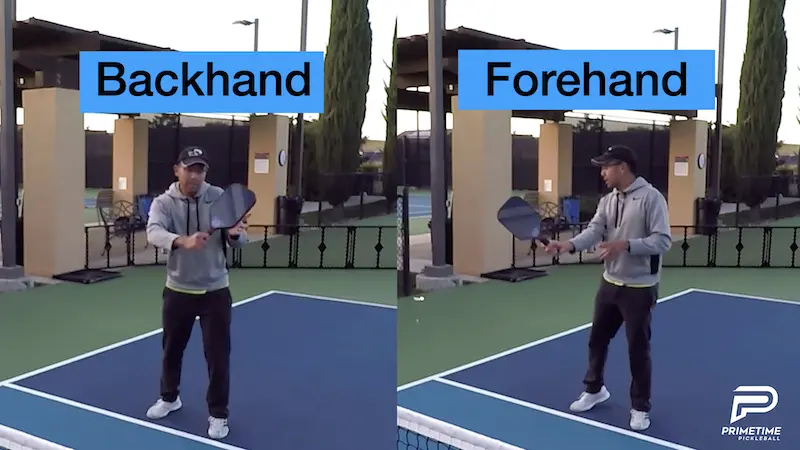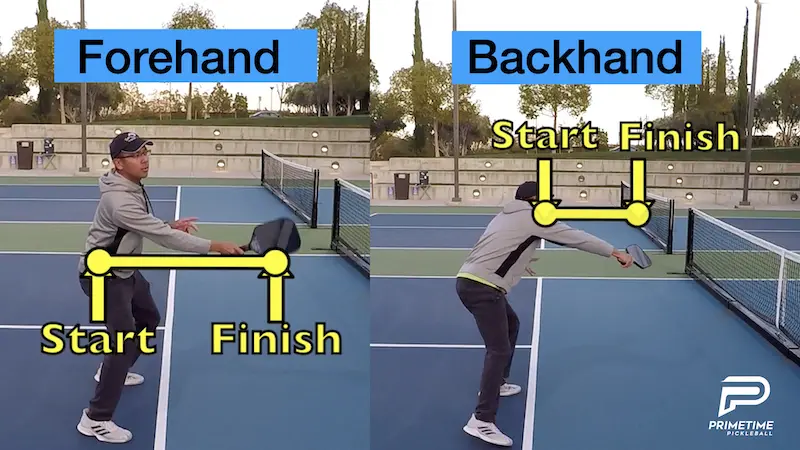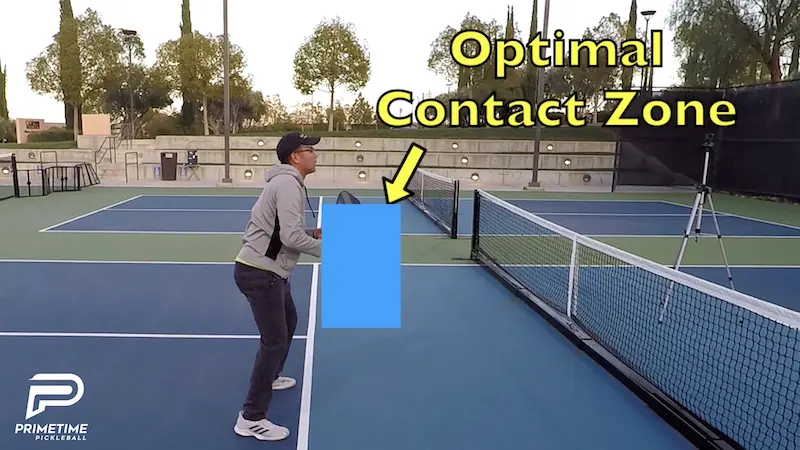In today’s blog we’re going to give you three tips that are going to improve your volleys.
Tip #1 – Stable (Constant) Paddle Face Angle
The first tip is that you want to have a stable paddle face when you’re volleying and you want your paddle angle to be slightly open.
You don’t want your paddle edge facing straight ahead or have your paddle face laying flat. It will be a lot tougher, nearly impossible, to hit the ball if you have it in either of these two ready positions.

A lot of people, when they first start the game of pickleball, aren’t sure what to do with their paddle as they’re hitting the ball because the ball is coming at them at various speeds. What you want to do is just meet the ball out in front and have a paddle face that doesn’t change. This is what we mean by a stable paddle face.
Your forehand and backhand volley should have a slightly open paddle face.
When you hit the volleys, you shouldn’t be doing anything crazy such as cutting the ball or anything. With a stable paddle face, all you’re going to be doing is pushing that ball.
Tip #2 – Compact Stroke – Very Little Backswing or Follow Through

Tip number two is that the volley should be a compact stroke. There’s not a lot of movement.
Depending on how far you’re going to volley the ball due to where your target is, you may push it a little bit more, but generally it’s very compact.
With the backswing you’re not going to take your paddle too far back. It shouldn’t go back past your body.You’re just going to take it back a little bit and your follow-through is just going to be a little push that’s going to end just right in front of your body.
You’ll only be pushing your paddle about a foot or two away from your body.
Tip #3 – Optimal Contact Zone – Not Too Close & Not Too Far

The third tip we’re going to talk about is having a consistent contact point. This is where your paddle connects with the ball.
We’re talking about having an optimal contact zone.
When you’re actually contacting the ball you never want to be really close to your body because that’s going to jam you up. This would be a very weak contact point. All the balls that you would volley could possibly fall to the net.
You also don’t want your contact point to be way out in front of you where you’re stretching forward because the further you get from your body your paddle face moves up and then those balls will probably go out.
Between the two incorrect positions we described above you will find your optimal range. In this range you will be able to properly direct where you want to hit the ball. Again, this range is about one to two feet in front of your body.
In this range is where you will have full control of your volleys. Depending on how fast or slow the ball coming to you is, you will have to make some adjustments but you will always want to stay in that optimal range.
So to sum it up, you shouldn’t contact too close or too far away from your body. You don’t want to be jammed up too close or stretched out way too far ahead.
Sometimes the ball will come at you a little bit faster than you expected and it could get close to your body so this is why you want your paddle ready position to be a foot or two in front of you so you can lay your paddle back if the ball comes to you very quickly.